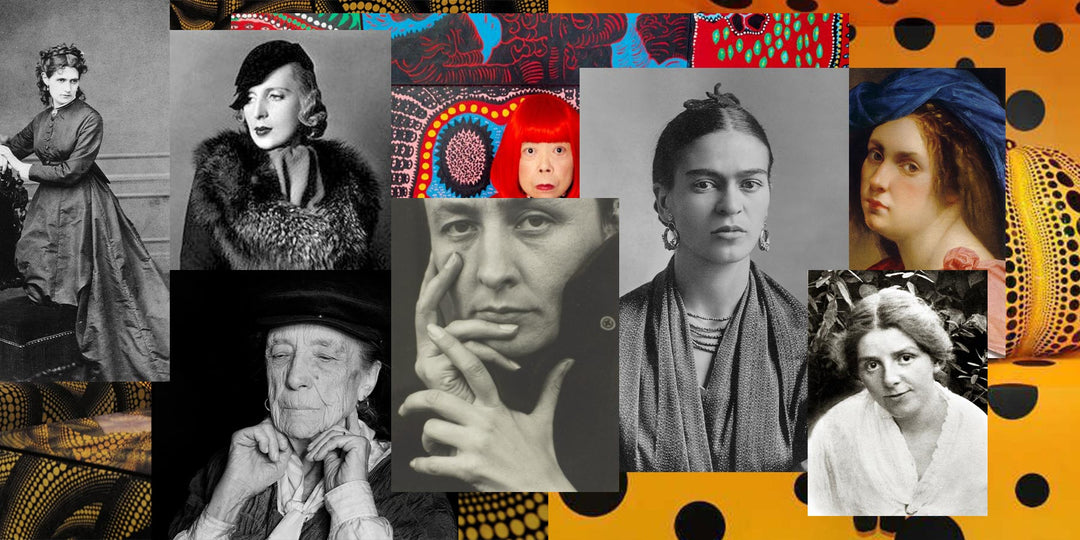The tragic beauty of Ophelia: A masterpiece by Sir John Everett Millais
The image of Ophelia, the tragic figure from William Shakespeare's Hamlet, has fascinated artists for centuries. Among the most iconic and moving depictions of this character is Ophelia (1851-1852), painted by the British Pre-Raphaelite Sir John Everett Millais. This masterpiece, breathtaking both in its technical execution and touching in its emotional depth, remains one of the best-known and most discussed works in Western art history.
The story of Ophelia in Hamlet
To fully appreciate Millais' Ophelia, one must first understand the character of Ophelia in Shakespeare's drama Hamlet. Ophelia is a young noblewoman caught in the chaos of the Danish royal court. She is the daughter of Polonius, the sister of Laertes, and the lover of Prince Hamlet. Ophelia's tragic fate is sealed when her relationship with Hamlet deteriorates, and after the death of her father, she descends into madness.
In Act 4, Scene 7, Ophelia's mental breakdown reaches its tragic climax. After her father is murdered by Hamlet, Ophelia is overwhelmed by grief and madness. She dies in a river, an apparent drowning, the causes of which remain unclear—whether accident or suicide remains open. Her death is one of the most tragic moments of the play and symbolizes the fragility of the human psyche, overwhelmed by grief, betrayal, and loss.
Millais’ Ophelia is an interpretation of this tragic scene. The painting captures the moment just before her death, with Ophelia floating in a river, surrounded by flowers, embodying the innocence and purity lost through the surrounding horrors.
John Everett Millais ,Ophelia (1851-1852)
- Oil on canvas – Tate Britain, London, United Kingdom
- Original size: 76.2 × 111.8 cm
- Reprint at Artlia: Ophelia, John Everett Millais
Sir John Everett Millais: The artist behind the masterpiece
Sir John Everett Millais (1829–1896) was a founding member of the Pre-Raphaelite Brotherhood, an artist group that rejected the academic standards of their time and sought a return to the vivid color, detailed representation, and naturalism of painters before Raphael, such as those of the Early Renaissance. The Pre-Raphaelites aimed to depict themes from mythology, literature, and religion with intense color and symbolism.
Millais, known for his technical brilliance and attention to detail, became one of the most famous members of the movement. Especially his early works, including Ophelia, are characterized by near-perfect realism and innovative use of color. While many Pre-Raphaelite works have a dreamy, almost otherworldly character, Ophelia stands out for its incredible naturalness, blending artistic technique with the portrayal of human emotions.
Millais' passion for realism led him to engage deeply with nature. For the depiction of Ophelia, he spent weeks in the English countryside studying the plants and flowers that would surround his figure. His dedication to accurately portraying the natural world in his paintings was so great that he often worked outdoors, even in cold weather, which led to pneumonia that affected his health while working on Ophelia.
The composition of Ophelia
When viewing Millais’ Ophelia, the first striking feature is the incredible realism with which he depicts nature. The scene is set on the bank of a calm river, where Ophelia floats in apparent tranquility, although her death is imminent. The composition is both beautiful and tragic, with Ophelia’s pale face and delicate figure surrounded by vibrant flowers, creating a strong contrast between life and death.
Ophelia’s body is wrapped in a white gown that flows around her like water, symbolizing innocence and purity. Her facial expression, calm yet melancholic, seems to show a moment of resignation rather than pain. The flowing water and the overhanging branches of the trees create a framing effect that intensifies Ophelia’s isolation in her final moments.
One of the most striking features of the painting is the contrast between the vibrant flowers around Ophelia and the impending death. Millais used more than thirty different species of flowers, plants, and even insects, all carefully researched for meaning and symbolism. This richness of detail in the flora and fauna of the riverbank emphasizes the contrast between the beauty and vitality of nature and the sorrow of Ophelia’s fate.
Symbolism in Ophelia
In Pre-Raphaelite art, symbolism plays a central role in conveying deeper meanings within a painting. Millais' Ophelia is no exception, as the image is enriched with a variety of symbols that add additional dimensions to the scene.
The flowers surrounding Ophelia are strongly connected to Shakespeare's Hamlet. In the tragedy, Ophelia distributes flowers to various court members before her death, each flower having its own meaning. In Millais’ painting, the flowers are chosen to reflect these associations but also address broader themes of love, madness, and death.
Some of the depicted flowers are:
- Willow: Represents forsaken love and mourning.
- Roses: Symbolize love, but in the context of Ophelia’s death, they could also represent the transition from love to death.
- Violets: Stand for remembrance and thoughts, reflecting Ophelia’s grief.
- Fennel: Often associated with flattery and deceit, indicating the betrayal Ophelia experienced from Hamlet.
- Daisies: Represent innocence and purity, with Ophelia’s innocence ultimately lost in tragic death.

Additionally, the river itself can be understood as a symbol both for the flow of time and for inevitable death. Water is often associated in art with cleansing or renewal, but in Ophelia’s case, it becomes a symbol of her drowning, her loss of control, and the overwhelming power of nature and fate.
The emotional impact of Ophelia
The emotional impact of Ophelia arises from the tension between the serene beauty of the scene and the knowledge of the impending tragedy. The peacefulness of the water, the delicate portrayal of Ophelia’s face, and the detailed surrounding nature amplify the loss of innocence that Ophelia embodies. The calmness of the water contrasts sharply with the violence of her death and evokes feelings of sadness, empathy, and helplessness.
Millais’ Ophelia is a delicate balancing act between beauty and sorrow, creating an image that is both soothing and disturbing. It is a moment frozen in time, a fleeting instant of life before the inevitable end. The viewer is drawn into the tragic beauty of Ophelia and feels a deep emotional connection to her fate.
Ophelia’s legacy in art and culture
Since its creation, Ophelia has remained one of the most celebrated works in Western art history. The combination of vivid realism, emotional depth, and symbolic richness has inspired countless artists, writers, and musicians. The image is frequently reproduced in literature, art, and popular culture and symbolizes the fragility of women, the complexity of love and grief, as well as the tragic consequences of unrequited love.
Ophelia has become an icon of female tragedy, a symbol of the fragile boundary between life and death. The image of Ophelia floating in water surrounded by flowers appears in numerous artworks and literary works, cementing her place as one of the most powerful female figures in Western cultural history.
Furthermore, Ophelia has also given space to feminist interpretations. The portrayal of Ophelia as a passive victim, overwhelmed by her emotions and the men around her, has been interpreted as a commentary on the limited agency and autonomy of women in the 19th century. However, modern interpretations also see Ophelia as a symbol of empowerment, as she exists in a moment of pure beauty, free from the constraints of the patriarchal society that condemned her.
Conclusion
Sir John Everett Millais’ Ophelia remains one of the most powerful and impressive depictions of the tragic heroine from Shakespeare’s work. Through his masterful technique, vivid realism, and symbolic use of flowers and water, Millais creates an emotional depth that has touched viewers for over a century. The painting captures Ophelia’s fragility and innocence and symbolizes both the beauty and sorrow of the human condition. Ophelia stands as a timeless masterpiece whose ability to evoke deep emotional responses ensures it will continue to endure as an iconic work in the art world in the future.


















